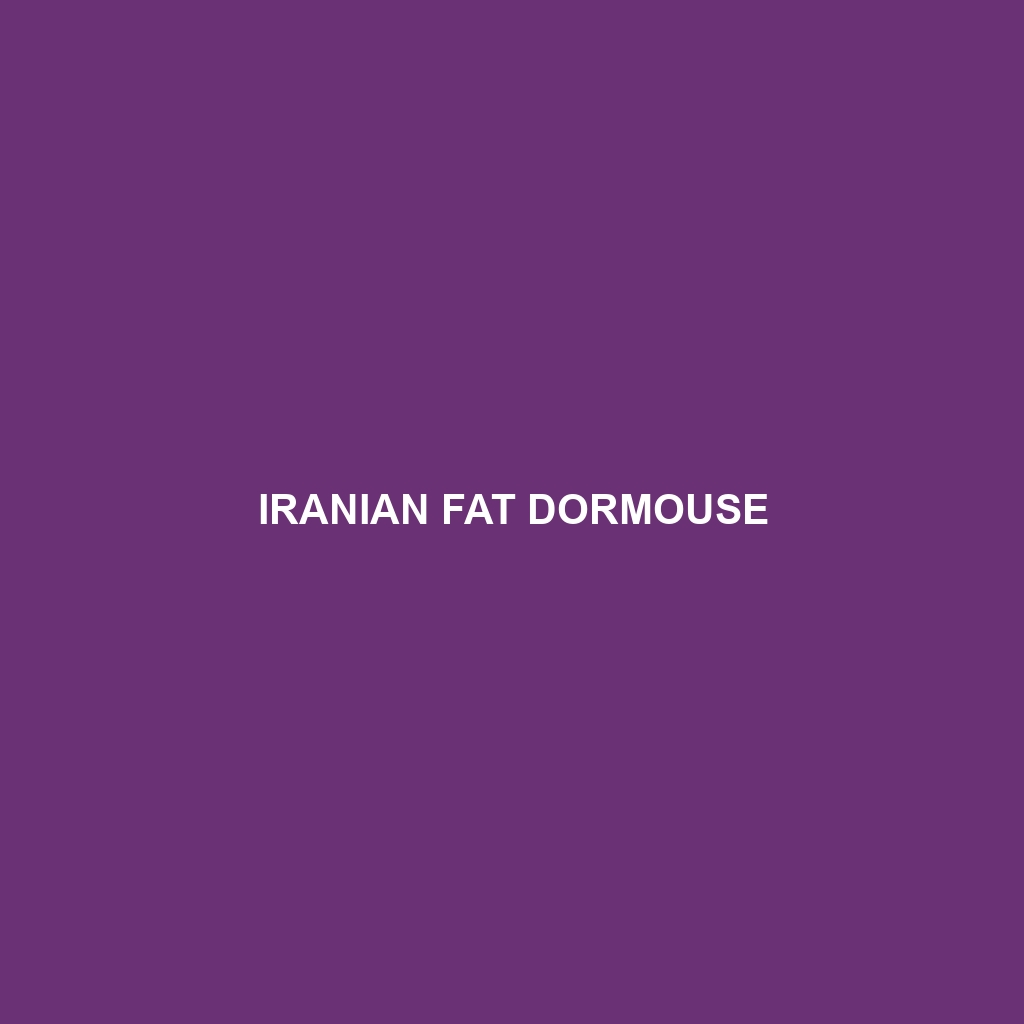Iranian Fat Dormouse (Scientific Name: )
Common Name: Iranian Fat Dormouse
Scientific Name:
Habitat:
The Iranian Fat Dormouse is primarily found in the mountainous regions of Iran, particularly within the Alborz and Zagros mountain ranges. This species thrives in temperate forests, shrublands, and areas with abundant vegetation. They prefer environments with plenty of cover, such as dense bushes and trees, which provide both shelter and foraging opportunities.
Physical Characteristics:
This nocturnal rodent typically measures around 8–10 inches in length, including a bushy tail that accounts for almost half of its total length. The Iranian Fat Dormouse is characterized by its plump body, large eyes, and soft, thick fur which is usually a blend of brown and gray with a cream-colored belly. Its distinctive features include large, rounded ears and a robust tail, which are adaptations for their arboreal lifestyle.
Behavior:
Known for their crepuscular activity patterns, Iranian Fat Dormice are most active during dusk and dawn. They exhibit a unique climbing ability, using their sharp claws to navigate through trees effortlessly. Social creatures, they often thrive in small groups, engaging in playful behaviors during their active hours. Additionally, they construct nests in tree hollows or dense foliage to protect themselves from predators.
Diet:
Iranian Fat Dormice are omnivorous, primarily feeding on a varied diet rich in fruits, nuts, seeds, and insects. They are particularly fond of berries, which form a significant part of their dietary intake during the summer months. These dormice have adapted well to foraging in their forested habitats, utilizing their keen sense of smell to locate food sources efficiently.
Reproduction:
The breeding season for Iranian Fat Dormice typically occurs in late spring to early summer. After a gestation period of about 30 days, females give birth to a litter of 3 to 5 offspring. The young are born blind and hairless, relying on their mother’s milk for the first few weeks. Notably, mothers exhibit strong parental care, staying close to their litters until they are weaned and ready to explore on their own.
Conservation Status:
The Iranian Fat Dormouse is currently listed as vulnerable due to habitat loss and degradation caused by deforestation and agricultural expansion. Conservation efforts are being discussed to protect their natural habitats and ensure the sustainability of their populations.
Interesting Facts:
One fascinating aspect of the Iranian Fat Dormouse is its exceptional ability to enter a state of torpor during extreme weather conditions, significantly conserving energy. Additionally, these dormice have been known to communicate through a series of vocalizations, which aid in group cohesion during foraging.
Role in Ecosystem:
As a seed disperser, the Iranian Fat Dormouse plays a critical role in maintaining the health of its ecosystem. By consuming fruits and seeds, they inadvertently help in plant propagation, ensuring the biodiversity of their forest habitats. Furthermore, they serve as prey for various predators, contributing to the food web dynamics within their ecological community.
